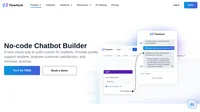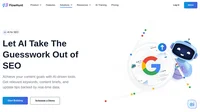AI Market Segmentation is the process of dividing a broad consumer or business market, normally consisting of existing and potential customers, into sub-groups of consumers (known as segments) based on some shared characteristics using artificial intelligence (AI) technology. This segmentation allows businesses to target specific customer groups with tailored marketing strategies, enhancing personalization and maximizing marketing effectiveness. Advanced algorithms enable AI to segment customers based on traits such as demographics, geographic location, and psychographics, allowing businesses to analyze vast amounts of data and identify target groups more effectively.
How It Works
AI Market Segmentation involves several key steps:
- Data Collection: AI-driven systems gather extensive data from multiple sources including CRM systems, social media, purchase histories, and web interactions. This data forms the basis for segmentation and personalization. AI enhances data accuracy by cleaning up duplicate or outdated data, ensuring precise target group identification.
- Data Analysis: AI algorithms analyze collected data to identify patterns and correlations that are not immediately apparent through traditional analysis. This involves processing demographic, behavioral, psychographic, and geographic data to create a comprehensive customer profile. AI-powered segmentation reflects real-time changes in buyer behavior and improves ROI.
- Segment Creation: Based on the analysis, AI systems divide the customer base into smaller segments. These segments are often more detailed and accurate than those created through manual methods, allowing for more precise targeting.
- Real-Time Updates: AI systems continuously update these segments as new data becomes available, ensuring that the segments remain relevant and accurate over time.
- Personalization and Targeting: Once the segments are defined, businesses can create personalized marketing strategies that resonate with each group, enhancing customer engagement and conversion rates. AI-driven customer segmentation enables businesses to create personalized marketing campaigns that resonate with specific customer groups.
Core Types of Market Segmentation
- Demographic Segmentation:
Demographic segmentation is one of the most straightforward and widely used methods. It involves dividing the market based on variables such as age, gender, income, education, occupation, and family status. This type of segmentation is highly effective because it relies on easily obtainable data, which often forms the basis of consumer behavior. For example, T-Mobile’s 2019 campaign successfully targeted baby boomers by identifying their need to stay connected with family, leading to a specialized data plan for those aged 55 and above. - Psychographic Segmentation:
Psychographic segmentation delves deeper into consumer behavior by focusing on lifestyle, interests, values, opinions, and personality traits. This type of segmentation provides insights into why consumers make purchasing decisions, enabling businesses to develop more personalized marketing strategies. For instance, Mercedes Benz targets customers who value luxury and status, contrasting with Volkswagen’s focus on affordability and reliability. - Geographic Segmentation:
This method segments the market based on geographic boundaries such as country, region, city, or neighborhood. Geographic segmentation allows businesses to tailor their offerings to regional preferences and cultural differences. A prime example is how a company specializing in waterproof outerwear would target markets in rainy regions like Seattle rather than arid areas like Arizona. - Behavioral Segmentation:
Behavioral segmentation groups consumers based on their interaction patterns with a brand, including purchasing habits, brand loyalty, usage rates, and readiness to purchase. This segmentation is crucial for understanding consumer behavior and tailoring marketing strategies to different stages of the customer journey. Netflix exemplifies this approach by offering personalized recommendations based on individual viewing habits, resulting in over 80% of its views originating from the recommendation feature. - Firmographic Segmentation:
Similar to demographic segmentation but applied to organizations, firmographic segmentation categorizes businesses based on attributes such as industry, company size, number of employees, and revenue. This type of segmentation is particularly beneficial in B2B marketing, where companies target other businesses rather than individual consumers. - Needs-Based and Intent Segmentation:
Needs-based segmentation categorizes consumers by the specific problems they aim to solve and the benefits they seek, allowing companies to identify and address unmet needs. Intent segmentation focuses on identifying and grouping customers with strong buying signals to concentrate marketing and sales efforts effectively.
Benefits
Enhanced Personalization
AI enables businesses to go beyond traditional demographic segmentation by incorporating behavioral, psychographic, and real-time data. This allows for hyper-personalized marketing messages that resonate deeply with individual customers, increasing engagement and loyalty. AI algorithms provide actionable insights into customer preferences, leading to informed decision-making and improved product development.
Increased Efficiency
AI automates the segmentation process, allowing for quick and accurate analysis of vast datasets. This not only saves time but also ensures that marketing efforts are directed towards the most promising segments, optimizing resource allocation and maximizing ROI.
Improved Decision-Making
AI-driven insights provide businesses with a deeper understanding of customer behavior, preferences, and trends. This information helps in making informed decisions regarding product development, pricing strategies, and marketing campaigns.
Higher Conversion Rates
By targeting specific segments with tailored messages and offers, businesses can significantly improve their conversion rates. AI segmentation allows for precise targeting, which leads to more efficient marketing efforts and higher ROI.
Real-Time Adaptation
AI allows for dynamic segmentation, adjusting to changes in customer behavior and market trends in real-time. This ensures that marketing strategies remain relevant and effective, even as market conditions evolve.
Challenges
Data Quality
The effectiveness of AI segmentation depends on the quality of data. Inaccurate or outdated data can lead to flawed segmentations and ineffective marketing strategies. Ensuring data accuracy and relevance is crucial.
Privacy Concerns
AI segmentation involves handling vast amounts of customer data, raising significant privacy concerns. Businesses must ensure compliance with data protection regulations like GDPR to maintain customer trust.
Algorithm Bias
AI algorithms can inadvertently carry biases present in the training data, leading to unfair segmentations. Regular evaluation and adjustment of AI models are necessary to ensure fairness and accuracy.
Integration and Adoption
Implementing AI segmentation requires significant changes in marketing processes and systems. Ensuring user acceptance and seamless integration within existing workflows is essential for success.
Let AI Take The Guesswork Out of SEO
Boost your SEO with FlowHunt's AI tools! Research keywords, analyze competitors, create briefs & optimize content effortlessly. Try now!"



